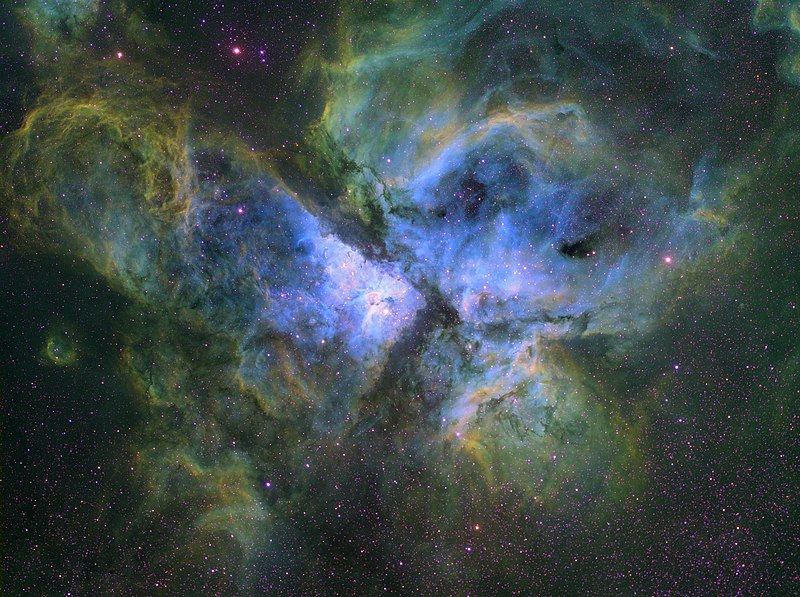Answer – A nebula occurs in the region between the stars and contains vast, diffuse clouds of gases and dust.
Explanation:
The term “nebula” is Latin for “mist” or “cloud.” Its chemical composition is relatively uniform, with around 90% hydrogen and the majority of the rest being helium, along with trace amounts of other elements.

Image credit: Dylan O’Donnell, deography.com / Wikimedia Commons (licensed under CC BY-SA 1.0)
Primarily, there are five types of nebulae:
Emission nebulae are characterized by vibrant colors. They are often associated with active star formation, containing ionized gases—primarily hydrogen—that emit various colors when energized by nearby hot stars. A well-known example is the Orion Nebula.
Reflection nebulae reflect the light of nearby stars, creating a bluish appearance. They are composed of dust particles. The Pleiades star cluster is associated with reflection nebulae.
Dark nebulae contain dense and cold clouds of gas and dust, which obscure light from background stars and other nebulae. A notable dark nebula is the Coalsack Nebula.
Planetary nebulae are formed in the late stages of a star’s life and consist of an expanding shell of ionized gas expelled by a dying star. They contain gases such as helium, carbon, nitrogen, and oxygen expelled by the central star. The Helix Nebula is a well-known planetary nebula.
Supernova remnants, resulting from the explosion of a massive star, contain remnants of the stellar core. Comprising shockwaves of gas and dust, along with heavier elements synthesized in the supernova explosion, they often exhibit unique structures. A famous example is the Crab Nebula.